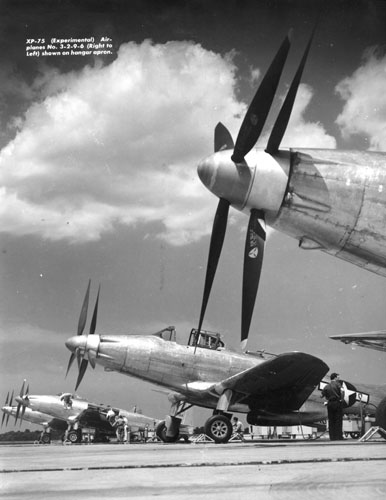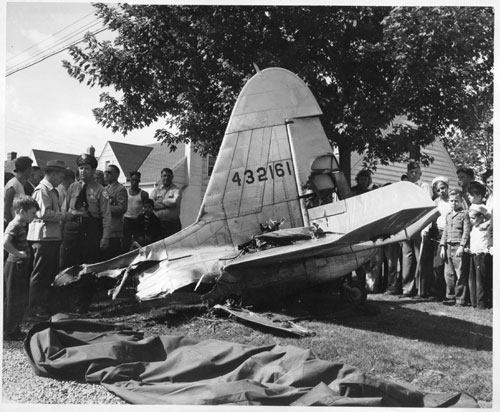The XP-75
Today, we try to build a perfect airplane. The University of Houston's College of Engineering presents this series about the machines that make our civilization run, and the people whose ingenuity created them.
In the gathering days of World War Two, the Air Force badly needed airplanes and lots of them. So they went to automobile makers. In 1941 General Motors started making B-29 bomber parts and Ford set up a plant to make B-24 bombers at Willow Run. Then GM hired Don Berlin, designer of the P-40. The P-40 was the fighter plane that the Flying Tigers had used in China.
Up to then, airplanes had been virtually handmade. Historian I.B. Holley tells us that the biggest airplane company could turn out three planes a day while auto makers made three cars a minute. Henry Ford arrogantly said that, freed of government red tape, he could make more than a thousand airplanes a day. He said all he needed was "a standardized design of a late-model aircraft."
That reminds me of a systems expert who, during the development of the Engines web site, said we should mechanize the process so as to work on each episode only once.
We can do that when we mass-produce simple objects that remain static. It was certainly out of the question for anything as fluid as a web site. WW-II airplanes were not only too sophisticated, but they had to keep changing. Engine tolerances were higher for airplanes than for cars, and airplanes absolutely had to undergo redesign while the experimental models were being built. After that, wartime airplane designs were constantly updated as Allied and Axis airplanes kept besting one another in a crazy game of leapfrog. Ford grew rich making Model T's for fourteen years. We would have lost the war trying to fight it in Model T airplanes.
But Don Berlin bought into Ford's idea. He went to the Air Force with a plan meant to tie his skills as an airplane designer to GM's style of mass production. He showed them a new fighter plane design, the XP-75, which would outperform our experimental fighters. He'd avoid the problems those planes were giving us, by using the best parts of other airplanes: the wing of the P-40, the tail of the A-24, the landing gear of the P-47, and so on.
Like the creations of Pygmalion or Frankenstein, the XP-75 was to be an assembly of perfect parts. Unfortunately, the result resembled those literary creatures. It was an oversized monster that couldn't begin to compete with planes designed from the ground up. The Air Force was so sure this beast would succeed that it went ahead and tooled up to mass-produce it. When the plane was finally scrapped in 1944, they'd spent over nine million dollars building fourteen airplanes. That was a lot of money in 1944.
Designers must, after all, seek out the harmony of the many parts that make up a design. They must see designs whole. Sophia Loren once pointed out that all her parts were wrong. Her nose was the wrong shape; her mouth was too wide, and so on. Yet who can fault her beauty? Components of a good design must make sense in the context of the whole. And the XP-75 was not a whole airplane.
I'm John Lienhard, at the University of Houston, where we're interested in the way inventive minds work.
(Theme music)
Holley, I. B., Jr., A Detroit Dream of Mass-Produced Fighter Air-craft: The XP-75 Fiasco. Technology and Culture, Vol. 28, No. 3, July 1987, pp. 578-593.
Yenne, B., The World's Worst Aircraft. New York; Barnes & Noble Books, 1987, pp.66-67
This is a greatly revised version of old Episode 67.
For more on the XP-75, see this Wikipedia article. More detail is available in this "Military Factory" article.
The following photos of XP-75s were passed on by Tom Veselenek whose father, Mike Veselenek, obtained them when he worked with the Fisher Body Company during WW-II. The bottom photo shows the tail of one of the XP-75s that crashed.


